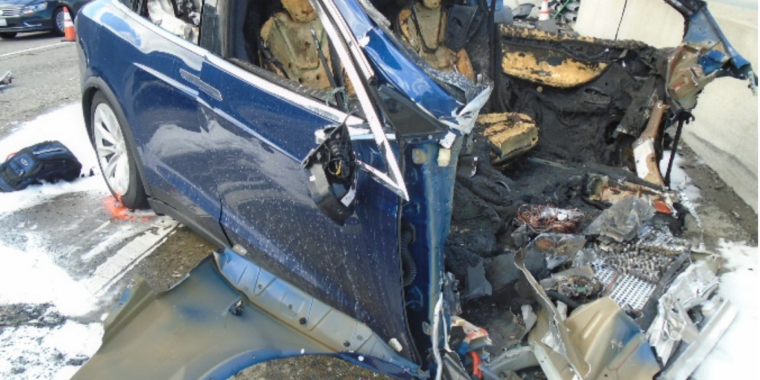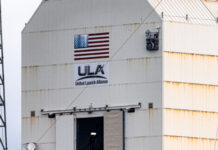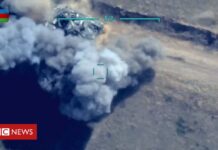

The family of deceased Model X customer Walter Huang has sued Tesla and the state of California in state court, the family’s attorneys announced on Wednesday.
“Mrs. Huang lost her husband, and two children lost their father because Tesla is beta testing its Autopilot software on live drivers,” family attorney Mark Fong said. He says the family wants to make sure that other drivers don’t suffer Huang’s fate.
Huang died in March 2018 while traveling on a freeway in Mountain View, Calif. He had Autopilot engaged as his Model X approached a point where an exit lane diverged on the left-hand side of the road. His Tesla struck a concrete barrier dividing the two lanes, and he died from his injuries.
A June report from the National Transportation Safety Board reconstructed the final seconds of the trip. The agency found that, seven seconds before the deadly crash, “the Tesla began a left steering movement” that carried it into the widening gap between the diverging lanes, which it apparently mistook for a travel lane.
At this point, NTSB says, the car detected that there was no longer a vehicle ahead of it. So it began to accelerate and crashed into the lane divider at 70 miles per hour. The NTSB says there was “no precrash braking or evasive steering movement detected.”
Family says Autopilot is “unreasonably dangerous”
Tesla declined to comment for this story, but in the past the company has publicly blamed Huang for his own death. “The only way for this accident to have occurred is if Mr. Huang was not paying attention to the road, despite the car providing multiple warnings to do so,” the company said last year.
According to the NTSB, Huang’s hands were detected for 34 seconds out of the last minute of the trip—but not in the final six seconds.
The Huangs’ attorneys, on the other hand, argue that Tesla still bears responsibility for manufacturing a product that allegedly steered directly into the lane divider. The lawsuit argues that the Model X “was in a defective condition” and “was unreasonably dangerous.” The lawsuit alleges that Tesla knew about Autopilot’s flaws but failed to adequately warn customers about them.
The lawsuit compares Tesla’s Autopilot to emergency braking products manufactured by other carmakers—Subaru, Mazda, Chrysler, Mitsubishi, and Honda—that were selling cars with automatic emergency braking systems at the time Huang bought his Model X from Tesla. (All recent Tesla vehicles, including Huang’s, come with automatic emergency braking.)
The lawsuit seems to imply that these other systems would stop a car that’s hurtling toward a concrete lane divider, but the lawsuit doesn’t actually provide evidence for this. And there’s reason to doubt it.
As we explained in detail last year, most driver-assistance systems on the market today are explicitly not designed to prevent high-speed collisions with stationary objects. At freeway speeds, these systems generally ignore stationary objects and focus on maintaining a safe distance from other moving vehicles.
Many emergency braking systems on the market today simply aren’t sophisticated enough to distinguish an object in the road from an object near the road. If they tried to stop for every object that appeared to be in the road, they’d have a lot of false positives. And at freeway speeds, slamming on the brakes unnecessarily can be a cause of accidents in its own right.
Still, the lawsuit alleges that Walter Huang’s Model X didn’t just fail to prevent a crash with the lane divider—it actively steered the vehicle into the barrier. That could put this crash in a different category from situations where an emergency braking system merely fails to prevent an impending crash.
Tesla has argued that the use of Autopilot makes Tesla’s cars safer, but clear evidence of this is hard to find. Tesla has released statistics showing that its cars crash less often when Autopilot is engaged, but that may simply reflect the fact that Autopilot is primarily used on divided highways, which tend to have lower crash rates overall.
The Huangs also sued the state of California
Lane dividers often come with a crash attenuator—an accordion-like device that helps to absorb the force of a car’s impact. Unfortunately, the crash attenuator for this particular lane divider was damaged in another crash in the same spot the previous week. California’s transportation department had yet to replace it by the time of Huang’s crash.
So the Huang family also named the state of California as a defendant in its lawsuit. The family argues that the highway department had more than enough time to repair the attenuator and that its failure to do so created a dangerous roadway situation, making the Golden State partially responsible for Huang’s death.









